Top 9 Forestry & Wood Products Industry Profitability
- September 9, 2024
- 0 comment
The forestry and wood products industry represents a significant component of the global economy, providing essential raw materials for sectors such as construction, paper production, and furniture manufacturing. Given its importance, the industry’s profitability is vital to sustaining growth and innovation.

Profitability in this sector is influenced by multiple factors, including global demand, environmental policies, technological innovations, and labor dynamics. This article delves into the key drivers of profitability in the forestry and wood products industry, offering insights into how companies navigate the complexities of cost, competition, and regulation.
Table of Contents for Forestry & Wood Products List:
- Revenue Streams in the Forestry Industry
- Supply Chain Dynamics
- Cost Structure in the Forestry Industry
- External Factors Influencing Profitability
- Technological Innovation and Its Role in Profitability
- Environmental Concerns and Profitability
- Labor and Workforce Challenges
- Global Trade and Export Market
- Competitive Landscape
Industry Landscape and Major Players
The forestry and wood products industry is broad, encompassing activities from timber harvesting to the production of wood-based goods like furniture, pulp, and paper. Major players include global giants like Weyerhaeuser, International Paper, and Canfor, who dominate the market with integrated operations that span forest management, harvesting, processing, and distribution.
| Company | Gross Margin | Operating Margin | Net Margin | Return on Equity (ROE) |
|---|---|---|---|---|
| American Woodmark Corporation | 22.63% | 8.4% | -2.27% | 14.73% |
| Aspen Aerogels Inc | 23.09% | -21.86% | -66.3% | -12.84% |
| Boise Cascade Company | 19.84% | 6.25% | 1.77% | 16.94% |
| Beacon Roofing Supply Inc | 25.57% | 4.76% | -2.17% | 44.19% |
| Bluelinx Holdings Inc | 15.95% | 1.87% | 1.31% | 5.92% |
| Masonite International Corporation | 24.79% | 9.2% | 14.01% | 22.68% |
| Enviva Inc | 16.35% | -26.56% | 88.9% | -131.93% |
| Fortune Brands Innovations Inc | 42.82% | 10.82% | -18.05% | 20.21% |
| GMS Inc | 32.28% | 3.03% | 6.24% | 21% |
| Huttig Building Products Inc. | 23.1% | 5.68% | 0.22% | 63.09% |
| Jeld-Wen Holding Inc | 19.29% | -1.88% | -2.19% | -4.55% |
| Koppers Holdings Inc | 20.24% | 4.76% | 0.96% | 18.68% |
| Louisiana-Pacific Corporation | 32.31% | 19.66% | 8.97% | 28.1% |
| Safe and Green Holdings Corp | 36.64% | -516.44% | 70.96% | -4115.1% |
| Trex Company Inc | 45.4% | 23.84% | 0.29% | 35.73% |
| UFP Industries Inc | 19.07% | 6.64% | 3.24% | 15.9% |
| West Fraser Timber Co Ltd | 27.41% | -2.59% | 0% | -2.31% |
Explanation:
- Gross Margin reflects the percentage of revenue left after accounting for the cost of goods sold.
- Operating Margin indicates the profit after operating expenses but before taxes and interest.
- Net Margin represents the actual profit as a percentage of revenue after all expenses.
- Return on Equity (ROE) measures a company’s ability to generate profit from shareholders’ equity.
These companies benefit from economies of scale, which enable them to reduce production costs and optimize profitability. Regional players also contribute significantly, particularly in emerging markets where demand for wood products is rising. The consolidation of major players has increased industry profitability by reducing competition and streamlining operations.
Revenue Streams in the Forestry Industry
Revenue generation in this sector primarily stems from timber, paper products, and finished wood goods like furniture. Timber remains a core revenue driver, especially in construction and energy markets. Additionally, processed wood products, such as pulp, plywood, and paper, contribute significantly to total revenue.
Pricing is often linked to market demand and can be volatile. For example, surges in construction activities can spike timber prices, boosting revenue. In contrast, companies heavily dependent on exports face challenges from fluctuating market prices and tariffs.
Supply Chain Dynamics
The supply chain, from forest to market, is crucial in determining profitability. The industry’s supply chain involves complex logistics, such as the harvesting of trees, transporting raw materials, and processing into usable products. High transportation costs and the challenge of inventory management impact margins. Efficiently managing logistics reduces costs, directly improving profitability.

Firms that invest in technology and infrastructure, such as strategically located processing plants or modern inventory systems, tend to perform better financially by minimizing these supply chain challenges.
Cost Structure in the Forestry Industry
The industry’s cost structure encompasses labor, raw materials, capital investments, and compliance with environmental regulations. Timber harvesting is labor-intensive, with skilled labor forming a large portion of operational costs. Companies face capital expenditures for machinery, sustainable forestry practices, and technological innovations that streamline production.

Economies of scale offer larger firms a significant advantage, allowing them to spread costs across higher production volumes, lowering per-unit costs and increasing margins. Smaller firms, however, may struggle to compete, especially in commodity-driven markets where price pressures are intense.
External Factors Influencing Profitability
Several external factors affect profitability in the forestry industry. Environmental regulations, such as those governing deforestation and sustainability, impose additional costs, but they are necessary for long-term industry viability. Additionally, global trade policies, tariffs, and international demand fluctuations can have a substantial effect on profit margins.
| External Factor | Impact on Profitability | Description |
|---|---|---|
| Environmental Regulations | Increase in costs | Compliance with deforestation laws, carbon emissions controls, and sustainability standards. |
| Trade Policies & Tariffs | Potential revenue loss | Tariffs and trade restrictions can reduce access to global markets, squeezing profit margins. |
| Global Demand Fluctuations | Volatile profitability | Economic downturns or demand surges directly impact sales and timber pricing. |
| Currency Fluctuations | Affects export profitability | Exchange rates can increase costs or reduce revenues for international trade. |
For instance, tariffs on exports to major markets like China or the EU can squeeze profits. Similarly, recessions or economic slowdowns often lead to reduced demand for wood products, negatively impacting revenues.
Technological Innovation and Its Role in Profitability
Technology is reshaping the forestry industry, with innovations that boost productivity and cut costs. Precision forestry techniques, such as drones and AI, help monitor forest health and optimize harvesting. Automation in sawmills and wood-processing facilities also significantly reduces labor costs and improves output quality.
Sustainability technologies, including those that enhance carbon capture or promote reforestation, are increasingly important, not just for regulatory compliance but for boosting long-term profitability by appealing to eco-conscious markets.
Environmental Concerns and Profitability
The balance between profitability and environmental stewardship is a delicate one. The forestry industry must manage issues such as deforestation, habitat destruction, and carbon emissions. Failing to address these concerns can result in reputational damage and regulatory penalties, negatively affecting profitability.

On the flip side, companies that adopt sustainable forestry practices, like replanting trees or earning carbon credits, can benefit from a positive public image and potential new revenue streams.
Labor and Workforce Challenges
The workforce in the forestry industry is another critical factor in profitability. The physically demanding nature of the work, combined with a shortage of skilled labor, can drive up labor costs. In regions where unions are strong, wage negotiations and labor strikes also pose challenges.

However, automation is gradually replacing manual labor, leading to improved efficiency and cost savings. For companies willing to invest in technology, this shift offers a clear path to higher profitability.
Global Trade and Export Market
International trade is a significant driver of profitability for forestry companies, with many relying on exports to maintain healthy margins. Major export destinations include Asia and Europe, where demand for timber and wood products remains robust.
| Factor | Impact on Profitability | Description |
|---|---|---|
| Export Market Dependency | Revenue fluctuations | Heavy reliance on key markets like Asia and Europe can affect revenue stability. |
| Tariffs and Trade Barriers | Reduced profit margins | Trade restrictions increase costs and reduce access to profitable markets. |
| Currency Exchange Rates | Profit volatility | Exchange rate fluctuations can either improve or reduce profit margins on exports. |
| Global Demand Trends | Increase or decrease in sales | High demand in construction or energy markets drives timber and product exports. |
However, the industry is vulnerable to global trade fluctuations, including currency risks and protectionist policies. For example, tariffs imposed by importing nations or trade wars can reduce access to key markets, forcing companies to either absorb the costs or pass them on to consumers, both of which can squeeze profits.
Competitive Landscape
The forestry and wood products industry is highly competitive, with companies vying for market share based on price, product quality, and sustainability credentials. Firms that can offer lower prices through efficient production methods or that invest in innovation often outperform their rivals.

Sustainability is becoming a differentiator, with companies that adopt eco-friendly practices enjoying higher customer loyalty and sometimes premium pricing. This competitive edge is especially important in markets where consumer demand for green products is growing.
Risks and Challenges
- Wildfires: Large-scale forest fires can destroy vast areas, reducing available timber and increasing costs for recovery and replanting.
- Pest Infestations: Outbreaks of pests, such as bark beetles, can severely damage trees, reducing forest health and timber yields.
- Disease Outbreaks: Forest diseases can spread quickly, killing trees and decreasing the quality of available timber.
- Economic Downturns: Global recessions or slowdowns in key sectors like housing and construction can lower demand for wood products, reducing prices and profitability.
- Inflation: Rising costs of raw materials, labor, and transportation can erode profits and make forestry operations more expensive.
- Supply Chain Disruptions: Interruptions in global supply chains, such as shipping delays or shortages of equipment, can impact the timely delivery of wood products and increase costs.
- Market Volatility: Fluctuations in timber prices due to economic conditions or changes in demand can affect the financial stability of forestry operations.
Strategies for Enhancing Profitability
To enhance profitability, companies in the forestry industry are adopting several strategies. Vertical integration, where firms control multiple stages of production, helps reduce costs and increase margins. Mergers and acquisitions are also common, allowing companies to scale up and benefit from economies of scale.
| Strategy | Impact on Profitability | Description |
|---|---|---|
| Vertical Integration | Cost reduction | Controlling multiple stages of production to cut costs and improve efficiency. |
| Mergers and Acquisitions | Market consolidation | Expanding market share and benefiting from economies of scale. |
| Investment in R&D | Long-term profitability | Fostering innovation in sustainable forestry and advanced wood processing. |
| Sustainability Initiatives | Enhanced public perception | Adopting eco-friendly practices to attract premium prices and new customers. |
Investing in research and development, particularly in sustainable practices, offers another avenue for long-term profitability. Firms that innovate in areas like sustainable forestry or advanced wood processing are better positioned to capture market share and comply with future regulatory requirements.
Future Outlook
The future of the forestry and wood products industry looks promising, with growth expected in emerging markets and increasing demand for eco-friendly products. However, companies will need to balance profitability with sustainability, particularly as environmental concerns become more pressing.
Technological advancements and sustainable practices will continue to play a central role in shaping the industry’s profitability. Firms that invest in innovation and adopt sustainable models will likely lead the market in the years to come.
Final Conclusion
In conclusion, the forestry and wood products industry has a complex profitability landscape influenced by market demand, technological innovations, environmental regulations, and cost structures. While challenges remain, especially regarding sustainability and labor, companies that strategically manage these factors can maintain and enhance profitability. Embracing new technologies, adopting sustainable practices, and navigating global trade dynamics are all critical to long-term success.
Frequently Asked Questions (FAQs)
- What are the main revenue streams in the forestry industry?
Revenue comes primarily from the sale of timber, wood products, and paper goods, with timber being the largest contributor, particularly in construction and energy markets. - How do environmental regulations impact profitability in the forestry industry?
Compliance with regulations, such as sustainable harvesting practices and carbon emissions control, can increase operational costs but is essential for long-term profitability. - What role do major players play in the industry’s profitability?
Large, vertically integrated companies like Weyerhaeuser and International Paper control significant market share, benefiting from economies of scale that enhance profitability. - How does global trade affect profitability in the forestry industry?
International markets, especially in Asia and Europe, are critical. However, currency fluctuations and tariffs can negatively impact export profitability. - What are the key cost factors in the forestry and wood products industry?
Major costs include labor, raw materials, machinery, and compliance with environmental laws. Economies of scale help larger firms lower per-unit production costs. - How does technology influence profitability in this sector?
Innovations like precision forestry and automation improve efficiency, reducing costs and enhancing profitability, particularly in the face of labor shortages. - What are the challenges related to labor in the forestry industry?
High labor costs and skilled worker shortages impact profitability. Automation is a growing solution, though it requires significant initial investment. - How do environmental concerns like deforestation affect industry profitability?
Companies face potential penalties for unsustainable practices. However, adopting eco-friendly practices, such as reforestation, can lead to new revenue opportunities and improved public perception. - What risks can affect the profitability of the forestry industry?
Risks include environmental events like wildfires or pest outbreaks, economic downturns, and market overcapacity, all of which can pressure profit margins. - What strategies are companies using to enhance profitability?
Strategies include vertical integration, mergers and acquisitions, investment in sustainable practices, and technological innovation to streamline operations and cut costs.

James Wilson
Forestry AuthorJames Wilson has over 15 years of experience in forestry economics, specializing in sustainable practices, investment opportunities, and financial management. He has contributed to notable publications like "Forestry Today" and "EcoFinance Journal" and is known for providing practical and insightful advice. With a degree in Environmental Economics, James stays updated through continuous learning and active participation in industry discussions. Outside work, he enjoys hiking and nature photography, bringing a well-rounded perspective to his professional role.



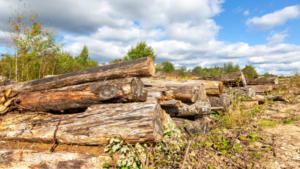
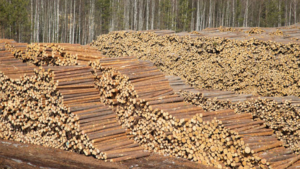
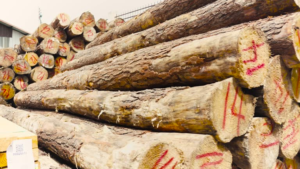


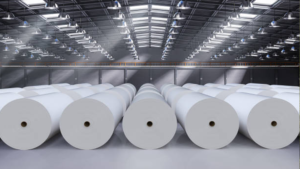
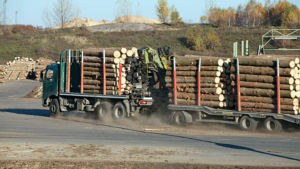

Leave your comment